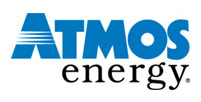- Buy a Quality Home From a Professional Licensed Builder
- Home Mortgage Loan Tips
- Mortgage Application Checklist
- What Exactly is the Closing?
HOME OWNERSHIP IS ONE OF THE MOST CHERISHED OF ALL AMERICAN DREAMS
For most American households, home ownership is the stepping stone to a secure financial future. Home equity accounts for more than half of the accounts for more than half of the total net wealth of the typical home owning family, making home ownership the primary source of a household’s net worth and the fundamental first step toward accumulating personal wealth.
BUY A QUALITY HOME FROM A PROFESSIONAL LICENSED BUILDER
Everyone interested in buying a new home wants to find a quality house built by a professional. But professionalism is one of those concepts where you know it when you see it, but you may have trouble defining it.
There is no single definition of professionalism, but there are certain principles that a building professional will practice.
- Building professionals believe that homes should be well designed, well constructed and well located in attractive communities with accessible educational, recreational, religious and shopping facilities.
- They feel a strong responsibilities to their customers and their community.
- Honesty is their guiding business policy, and they believe in dealing fairly with their customers, employees, subcontractors and suppliers.
- They try to build high standards of health, safety and sanitation into every home.
- They are licensed by the State.
- They are fully insured.
An important indicator of professionalism is whether the contractor belongs to a builders association or other professional groups. Becoming a dues-pay member groups…
HOME MORTGAGE LOAN TIPS: How to Simplify the Process
Whether you are buying your first home or a move-up house, the process of financing this important purchase can be the most intimidating part of the process. Understanding financial terminology and good preparation can take some of the “sting” out of the process.
Most people look to their bank…
MORTGAGE APPLICATION CHECKLIST
CONTRACT
- Legal Description of the property.
- Price
PERSONAL INFORMATION
- Socail Security number and driver’s license for all borrowers.
- Home address for the last two years.
- Divorce decree and separation agreement, if applicable.
INCOME
- Most recent pay stubs.
- Documentation on any phone numbers of all employers for the last two years.
- Name, addresses and phone numbers of all employers for the last two years.
- W-2’s for the last two years.
- If self-employed or commissioned sales, copies of last two years’ tax returns with all schedules and year-to-date profit and loss for current year, signed by an accountant.
- Documentation of alimony or child support, if such income is to be considered for the loan.
REAL ESTATE OWNED
- Names, addresses, phone numbers and account numbers of all mortgage lenders and landlords for the last two years.
- Copies of leases and two years’ tax return for any rental property.
- Market value estimate.
LIQUID ASSETS
- Complete names, addresses, phone numbers and account numbers for all ban accounts.
- Copies of the last three month’s statements for all bank accounts.
- Copies of any notes receivable.
- Value of other assets (autos, household goods and collectibles).
- Cash value of life insurance policies.
- Vested interest in retirement funds, IRA’s
LIABILITIES
- Names and account numbers of all revolving charge cards; balance and current monthly payment amount for each.
- Names, addresses, phone numbers and account numbers for all installment debt; approximate balance and monthly payment for each.
- Alimony or child support payments.
- Names, addresses, phone numbers and account numbers of accounts recently paid off, if used to establish credit.
This information was adapted from Building Your Home: An Insiders Guide. The Home Builder Press, National Association of Home Builders in Washington, DC.
WHAT EXACTLY IS THE CLOSING
From the buyer’s perspective, the closing can be generally broken in three pieces:
1. REVIEW AND SIGNING OF LOAN DOCUMENTS
In the firs phase of the closing, you the buyer, must review and sign all the loan documents provided by the lender. There may be seven to twenty documents or more, including the actual mortgage, note, affidavits, Truth-in-Lending statements, estimate of closing costs, and the escrow statement letter that outlines how much will be paid into the real estate tax and insurance escrows.
2. EXCHANGE OF DOCUMENTS BETWEEN BUYER AND SELLER AND TITLE COMPANY
The second phase of the closing deals with the relationship between you and the seller and the title company. There is an exchange of documents that must be signed by you and the seller, and then other documents that require the additional signature of the title company. The seller will provide certain documents for your inspection.
After these documents have been gone over and signed then the title company will have more papers for you to sign. These documents generally relate to the title, or are papers that the title company must send to the Internal Revenue Service regarding the purchase and sale of the home. Your documentation may include these:
The RESPA (Real Estate Settlement Procedures Act) “HUD-1” statement outlines who provides the money and from which sources, and details how the money gets paid out. This document is signed by you, the seller, and the title company.
Disclosure statements about construction contracts or any agreements entered into within the past three to six months for work to be done on the property. This is to ensure there will be no outstanding mechanics’ liens placed on the property.
Disclosure statement about any other matters that could ultimately affect the title to the property, such as lawsuits.
Internal Revenue Service form 1099, which relates to sales price of the home. Once signed, it will be used to cross-check your IRS form with documentation signed by the title company regarding the purchase and sale of the home.
3. DISBURSEMENT OF FUNDS
Once all documents have been signed, dated, and notarized, the title company can proceed with the disbursement of funds. It will take the money from you, the buyer, and cut the checks to the seller, the seller’s lender (if applicable), the brokers, the title company, and the attorneys. Since everyone usually gets paid out of the closing proceeds, it’s easy to see why the title company doesn’t accept personal checks, even for a few pennies. Title companies accept only cashier’s or certified checks, or a wire transfer, because that’s like accepting cash.



